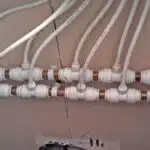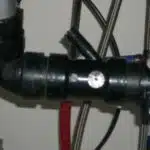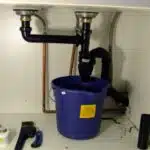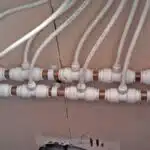Sewer drain snakes, also known as plumbing augers or drain cables, are essential tools for any plumber or homeowner dealing with clogged drains and pipes. These devices are long, flexible wires that can be inserted into the piping system to remove obstructions such as hair, grease, and other debris. Knowing how to use a sewer drain snake can save you money on expensive plumbing services and keep your home’s sewage system functioning properly.
In this article, we will discuss the step-by-step process for using a sewer drain snake effectively. We will cover the different types of augers available in the market, how to prepare for a snaking job, and tips for safe operation. Whether you are a professional plumber or a DIY enthusiast looking to tackle your home’s plumbing issues, this guide will provide you with the knowledge and skills needed to handle even the toughest blockages with ease.
Understanding The Different Types Of Augers
Sewer drain snakes, also known as augers, are essential tools for clearing clogs in plumbing. They come in different types and sizes, each designed for specific types of blockages. The most common type is the hand-held auger, which is used to clear clogs near the opening of a drain.
For more stubborn clogs that are further down the pipe, a power auger is recommended. This type of auger uses an electric motor to rotate the cable and break up blockages. It is important to note that power augers can be dangerous if not used correctly. Always read the manufacturer’s instructions before use and wear appropriate safety gear such as gloves and eye protection.
When using a sewer drain snake, it is vital to follow safety tips to avoid injury or damage to your plumbing system. Before inserting the auger into the drain, make sure the cable is properly attached and secure. Be cautious when turning the handle or activating the motor as sudden movements can cause the cable to whip around and damage pipes or fixtures. It’s also important to never force the auger past a blockage as this can cause further damage.
Identifying Signs Of A Clogged Drain
Clogged drains can be an inconvenience, but it is often preventable if you know the signs to look for. The first sign of a clogged drain is slow drainage. If water is taking longer than usual to go down your sink or shower drain, it may be a sign that there is something blocking the flow of water. Another common sign of a clogged drain is foul odors coming from your sink or shower drain. This could mean that food particles or other debris have gotten stuck in your pipes and are starting to decompose.
If you notice any of these signs, it’s important to take action as soon as possible to prevent further damage to your plumbing system. One way to prevent clogs is by being mindful of what you put down your drains. Avoid pouring grease, oil, or coffee grounds down your sink as they can solidify and cause blockages over time. Additionally, installing mesh screens on top of your drains can catch hair and other debris before they enter your pipes.
If you do experience a clogged drain, there are DIY drain cleaning alternatives that you can try before calling a professional plumber. For example, pouring boiling water down the affected drain may help dissolve some blockages. You can also try using a plunger or baking soda and vinegar solution to break up clogs. However, it’s important to use caution when attempting DIY solutions as they may cause damage if not done properly.
In summary, identifying signs of a clogged drain early on can save you time and money in the long run. By practicing good clog prevention habits and trying DIY solutions before calling for professional help, you can keep your plumbing system running smoothly for years to come. In the next section, we will discuss how to gather the necessary tools and materials for clearing a clogged drain with a sewer drain snake without causing any damage to your plumbing system.
Gathering The Necessary Tools And Materials
- In order to use a sewer drain snake, it is important to gather the necessary tools and materials.
- Tools such as a pipe wrench and a flashlight will be required to ensure the job is done properly.
- Necessary materials for a sewer drain snake include a cable with a cutting head to clear out the clog.
- Additionally, a variable speed drill is necessary to power the cable, and a pair of protective gloves may be needed when handling the cable.
Gathering Tools
When it comes to using a sewer drain snake, having the right tools and materials can make all the difference. Before beginning any job, it’s important to gather everything you’ll need to ensure that the process goes smoothly. As a plumbing expert or sewer drain snake technician, one of the first steps in gathering tools is choosing appropriate gloves. This ensures that your hands are protected from any potential hazards and allows for a better grip on the auger.
The next step in gathering tools is selecting the right type of auger for your needs. There are different types of augers available, including hand-held and power-driven options. Hand-held augers are ideal for smaller jobs, while power-driven options are better suited for larger jobs or tougher clogs. By choosing the appropriate type of auger, you can ensure that you have the right tool for the job at hand.
Overall, gathering tools is an essential part of using a sewer drain snake effectively. Choosing appropriate gloves and selecting the right type of auger are both key components in this process. By taking these steps, you can ensure that you have everything you need to tackle any clog with confidence.
Necessary Materials
When it comes to clearing a clogged drain, having the right tools is essential. However, in addition to choosing the appropriate auger and gloves, there are other materials that you’ll need to gather for a successful snaking. One important material is protective eyewear, which can prevent debris or chemicals from getting into your eyes while using the snake. Additionally, having a bucket nearby can be helpful for catching any water or debris that may come out of the drain during the process.
Another necessary material when using a sewer drain snake is lubricant. Applying lubricant to the cable before inserting it into the drain can help it move more smoothly and reduce friction. This can make it easier to navigate through bends and curves in the pipe without damaging them. Along with lubricant, having rags or towels on hand can be helpful for wiping down any excess grease or grime after completing the job.
Overall, gathering all necessary materials before starting a snaking job can help ensure that everything goes smoothly. In addition to choosing appropriate gloves and selecting the right type of auger, protective eyewear, a bucket, lubricant, and rags are all important materials to have on hand. By being prepared with all necessary materials, you can tackle any clog with confidence and efficiency.
Preparing The Area For Snaking
With all the necessary tools and materials gathered, it’s time to prepare the area for snaking. Before proceeding with the task, it is important to clear any obstacles that may hinder the process. This includes removing any furniture or fixtures near the drain that may get in the way of your operations.
Once you have cleared the area, it’s time to set up your workspace. Find a comfortable position where you can work easily and safely. It is also important to make sure that there is ample lighting in the area, as this will help you see what you are doing and prevent accidents from happening.
As you prepare for snaking, remember to put on protective gear before proceeding with the task. This is crucial as sewer drain snakes can be dangerous if not used properly. By wearing protective gear such as gloves and goggles, you not only protect yourself from injury but also reduce the risk of contamination from hazardous substances that may be present in the drain.
Putting On Protective Gear
When using a sewer drain snake, it is crucial to put on appropriate protective gear. This ensures that you are safe from any potential hazards and can perform the job effectively. The first step in choosing the right gear is to assess the job at hand. Consider the location of the drain and what obstacles you may encounter.
Once you have assessed the job, it’s time to choose your gear. The most important pieces of protective gear for using a sewer drain snake are gloves, safety glasses, and boots. Gloves protect your hands from debris or sharp objects that may be in the drain. Safety glasses protect your eyes from splashes or any flying debris that may occur during the process. Boots keep your feet dry and prevent any chemical spills from reaching your skin.
Properly fitting gear is essential when using a sewer drain snake. Make sure that your gloves fit snugly but not too tightly. Your safety glasses should fit comfortably around your ears and nose without sliding down or pinching too hard. Boots should provide enough room for movement while keeping your feet secure and protected. By choosing appropriate gear and ensuring proper fit, you can perform this task safely with minimal risk of injury or damage to yourself or others around you.
Transition: With appropriate protective gear now selected and fitted properly, it’s time to insert the snake into the drain – an essential step in clearing a clogged drain effectively and efficiently.
Inserting The Snake Into The Drain
It is common for homeowners to take care of minor clogged drain issues themselves rather than calling a professional plumber. However, using a sewer drain snake may seem daunting, especially for first-time users. Proper technique is essential while inserting the auger into the drain to avoid causing damage or worsening the blockage.
One common mistake made by novice users is not wearing protective gear. Before starting the process, it’s crucial to protect your hands with gloves and coveralls to avoid any contamination or injury. Additionally, ensure that you have clear access to the drain opening and enough light source to see what you’re doing.
Now that we have established safety precautions, let’s dive into how to insert the snake into the drain. First, position yourself in front of the clogged area with your feet apart for balance. Hold onto both handles of the auger tightly and begin feeding it slowly through the pipe while rotating clockwise simultaneously. Keep applying pressure as you push further until you reach an obstruction point. Troubleshooting tips include pulling back slightly on the auger before continuing forward and changing direction if there is resistance in only one area.
Advancing the auger through the pipe requires a steady hand and patience. In our next section, we will explore how to maneuver around bends and twists while ensuring maximum effectiveness at unclogging drains without causing damage or injury.
Advancing The Auger Through The Pipe
After inserting the snake into the drain, the next step is to advance the auger through the pipe. Proper technique is crucial in this stage to ensure that the blockage is cleared effectively. As you rotate the handle of the snake, make sure to push it forward slowly and steadily, while keeping your other hand firmly on the cable feed. This will help you control and guide the auger as it moves deeper into the pipe.
As you advance the snake through the pipe, you may encounter some resistance or feel it hitting a blockage. This is where troubleshooting skills come in handy. If this happens, stop rotating immediately and try to gently wiggle or twist the auger back and forth. You can also try pulling it out slightly before pushing it in again using a little more force. The goal here is to break up any obstruction that may be causing a clog.
If all goes well and you’re able to advance the auger through without any issues, keep going until you reach a point where you feel resistance or hit another blockage. This usually indicates that you’ve reached the main clog in your sewer line. In our next section, we’ll cover how to break up this blockage using your sewer drain snake effectively.
Breaking Up The Blockage
After determining the location of the blockage, it’s time to break it up. It’s important to use proper technique to avoid damaging the pipes or making the problem worse. One common obstacle is encountering a sharp turn in the pipe. In this case, it’s best to use a flexible snake that can navigate the bend without causing damage.
Using chemicals is another method for breaking up blockages, but it has its pros and cons. Chemicals can be effective in dissolving organic matter, but they may not work on solid objects like tree roots or foreign objects. Moreover, chemicals can also cause damage to pipes if used improperly or too frequently. It’s best to use chemicals only as a last resort and with caution.
Overall, breaking up blockages requires careful attention and technique. By using proper equipment and avoiding common obstacles such as sharp bends, you can effectively clear your sewer drain line without causing further damage. In our next section, we’ll discuss retrieving the debris that has been dislodged during this process.
Retrieving The Debris
Prior to utilizing a sewer drain snake, safety precautions must be taken to ensure a safe and effective operation.
Assemble the sewer drain snake according to the manufacturer’s instructions and connect the power cord to a power source.
Attach a retrieval tool to the head of the sewer drain snake, such as a cup, auger, or claw, depending on the type of debris being retrieved.
Insert the sewer drain snake into the drain and activate the motor to move the retrieval tool through the drain.
Monitor the location of the retrieval tool as it progresses through the drain, and stop the motor when the debris is reached.
Once the debris is retrieved, carefully remove the sewer drain snake from the drain and dispose of the debris appropriately.
Safety Precautions
When it comes to retrieving debris with a sewer drain snake, safety precautions should always be observed. Proper posture is important to prevent back strain and injuries. Make sure you stand with your feet shoulder-width apart and keep your back straight as you operate the snake. Eye protection is also crucial as debris can fly out unexpectedly and cause eye injuries.
There are several hazards to avoid when using a sewer drain snake. One of the most important is to never insert your hand into the drain while the snake is running. The rotating cable can cause serious cuts and abrasions to your skin. Also, be aware of electrical hazards when operating an electric-powered snake near water sources. Always use a GFCI outlet to prevent electrocution.
When handling the snake, make sure you have a firm grip on it at all times. Never let go of the handle or allow it to slip out of your hand while in use. If you’re working on a steep slope or uneven surface, be extra careful as this can affect your balance and control over the equipment. Remember, safety should always come first when using a sewer drain snake for debris retrieval.
Setting Up The Snake
Before retrieving debris with a sewer drain snake, it is important to set up the equipment properly. First, choose the appropriate type of snake for the job. There are two main types of snakes: manual and electric-powered. Manual snakes are operated by turning a handle, while electric-powered snakes use a motor to rotate the cable. Depending on the size and location of the debris, one type may be more suitable than the other.
Once you have selected the appropriate snake type, it is time to set it up for use. Begin by attaching the correct size and type of cable to the machine. It is important to choose a cable that fits snugly into the drain without being too loose or too tight. Next, make sure all safety precautions are in place before operating the machine. This includes wearing eye protection and ensuring that electrical outlets are GFCI protected.
Proper technique is crucial when using a sewer drain snake for debris retrieval. Always start with a small amount of pressure and slowly increase as needed to avoid damaging pipes or pushing debris further down into them. Keep your posture upright and maintain a firm grip on the handle at all times. Remember to never insert your hand into the drain while operating the machine, as this can cause serious injury. By following these steps and taking proper safety measures, you can effectively retrieve debris from sewer drains using a drain snake.
Retrieving The Debris
Retrieving stuck debris from sewer drains is a common issue faced by homeowners and plumbers alike. The process of retrieving debris involves the use of specialized equipment such as a sewer drain snake or auger. This equipment is designed to dislodge and remove blockages such as hair, food particles, and other foreign objects that can cause clogs in your plumbing system.
To retrieve the debris, it is important to first identify the location of the blockage. This can be done by observing slow draining water or backed up sewage. Once the location has been identified, the sewer drain snake can be inserted into the drain to break up and retrieve the blockage. It is important to use caution when operating the machine to prevent further damage to your pipes.
Preventing future blockages is also important after retrieving stuck debris. This can be achieved by implementing best practices such as not flushing non-degradable items down your toilet, using mesh screens over sink drains, and regular maintenance of your plumbing system. By taking these preventative measures, you can save yourself time and money in future repairs or emergency calls for assistance.
Repeating The Process If Necessary
Have you tried using a sewer drain snake on your clogged pipes but still haven’t achieved the desired result? Don’t worry, you can repeat the process if necessary. However, before doing so, make sure to remove the snake from the drain slowly and carefully, as it may have accumulated debris that can fall back into the pipes.
If repeating the process is necessary, try applying more pressure when inserting the auger. This will help break up any remaining blockage or debris in the pipes. If this does not work, it may be time to switch to a different type of auger.
When deciding to switch to a different type of auger, keep in mind that each one is designed for specific types of blockages. For example, a toilet auger is best used for unclogging toilets while a drum auger works well for larger residential or commercial pipes. Knowing which type of auger to use will save you time and effort in getting your pipes flowing freely again.
To continue with the cleaning process after repeating with another type of auger, flushing out your drain with water is essential. Flushing helps remove any remaining debris that could cause further clogs in the future. In addition, flushing also ensures that all parts of your pipes are free from any blockages or obstructions.
With these steps in mind, you can successfully unclog your drains using a sewer drain snake and other related tools properly and safely without fear of causing damage or harm to yourself or others around you.
Flushing The Drain With Water
After repeating the process of using a sewer drain snake, it is essential to flush the drain with water. Flushing the drain with water can help to clear out any remaining debris that may have been loosened by the auger. It is also an effective way to ensure that the drain is fully functional again.
One of the benefits of regular flushing is that it helps to prevent clogs from occurring in the first place. Regular flushing can help to keep your pipes clean and free from debris, which reduces the likelihood of clogs forming. Additionally, flushing your drains regularly can help to extend their lifespan, as it reduces the strain on your pipes.
When flushing your drain with water, it is important to ensure that you use adequate water pressure for effective flushing. This means ensuring that there is enough pressure in your pipes to push through any remaining debris and clear out your drain fully. If you are unsure about how much water pressure you need or how long you should flush your drains for, consult a plumbing expert or sewer drain snake technician for advice.
In preparing to clean and store the auger after use, it is important to ensure that all debris has been removed from its surface before storage. You may want to wipe down the surface with a damp cloth or rag to remove any dirt or grime that may have accumulated during use. Once clean, store the auger in a dry location away from moisture and direct sunlight until its next use.
Cleaning And Storing The Auger
- Prior to using the auger, it is important to ensure that the auger is in good working order and that all safety precautions are observed.
- To clean the auger, it should be scrubbed with a brush or cloth and a mild detergent, then rinsed with clean water.
- To ensure that the auger is properly stored, it should be wiped down with an oil-based lubricant, then wrapped in a plastic bag or cover to protect it from moisture.
- It is also important to keep the auger away from extreme temperatures and direct sunlight to avoid corrosion and damage.
- The auger should also be stored in a place that is not prone to flooding or other moisture-related damage.
- Regular inspection of the auger is important to ensure that it is functioning properly and that it is stored in the correct manner.
Preparing The Auger
Maintaining and cleaning the sewer drain snake auger is crucial to ensure its efficiency and longevity. Neglecting to clean or maintain the auger can lead to blockages, rusting, and damaged parts. As a plumbing expert or sewer drain snake technician, it is essential to prepare the auger before using it for cleaning purposes.
To begin with, ensure that you wear protective gloves and goggles. Then, disconnect the power source, if any, from the auger before proceeding with cleaning. Next, remove any debris or residue from the cable by wiping it down with a clean cloth. It is also important to inspect the cable for any visible signs of wear or tear. If you notice any damages or kinks in the cable, replace it immediately.
After cleaning and inspecting the cable, lubricate it with an appropriate lubricant to prevent rusting and enhance its ability to slide through pipes easily. Finally, store the auger in a dry place away from moisture and direct sunlight. Taking these steps will help keep your sewer drain snake auger in excellent condition for years to come.
Cleaning The Auger
Cleaning and maintaining your sewer drain snake auger is essential to ensure its efficiency and longevity. Neglecting to clean or maintain the auger can lead to blockages, rusting, and damaged parts. As a plumbing expert or sewer drain snake technician, it is crucial to follow specific cleaning techniques and maintenance tips to keep the auger in excellent condition.
Cleaning the auger involves several steps that require attention to detail. First, disconnect the power source from the auger before cleaning it thoroughly. Next, remove any debris or residue from the cable by wiping it down with a clean cloth. It is also important to inspect the cable for any visible signs of wear or tear. If you notice any damages or kinks in the cable, replace it immediately.
After cleaning and inspecting the cable, lubricate it with an appropriate lubricant to prevent rusting and enhance its ability to slide through pipes easily. Then, run water through the auger’s housing to flush out any remaining debris before storing it properly. Remember that proper cleaning and maintenance of your sewer drain snake auger will ensure that it operates at peak performance while prolonging its lifespan.
Storing The Auger
Proper storage of a sewer drain snake auger is crucial to ensure that it remains in excellent condition and prolongs its lifespan. As a plumbing expert or sewer drain snake technician, you must follow specific maintenance tips to store the auger correctly. Neglecting proper storage procedures can lead to damages, rusting, and blockages that can affect the auger’s efficiency and performance.
When storing the auger, it is essential to disconnect the power source and clean it thoroughly before placing it in storage. After cleaning, lubricate all moving parts with an appropriate lubricant to prevent rusting and enhance its performance. Store the auger in a dry, cool place away from direct sunlight or moisture that can damage the cable or housing.
Remember to inspect the auger regularly for any visible signs of wear or tear before storing it. If you notice any damages or kinks in the cable, replace them immediately. Proper storage of your sewer drain snake auger will ensure that it remains functional and efficient for a long time while eliminating costly repairs and replacements.
Tips For Safe And Effective Operation
Proper technique is crucial to the safe and effective operation of a sewer drain snake. Before starting, make sure you have chosen the correct type and size of snake for your specific job. Always wear protective gear such as gloves and eye goggles to avoid injury from flying debris or chemical splashes.
Once you begin using the snake, it’s important to use steady pressure rather than forcing it down the drain. Pushing too hard can cause damage to both the plumbing and the snake itself. Additionally, never try to force a bend or curve in the pipe as this can also cause damage.
Maintenance and care tips are key to ensuring that your sewer drain snake lasts as long as possible. After each use, clean and dry the equipment thoroughly before storing it in a cool, dry place. It’s also important to inspect your snake regularly for signs of wear and tear such as frayed cables or damaged blades.
Transition: While proper technique and maintenance are essential steps in using a sewer drain snake safely and effectively, there are also common mistakes that should be avoided. Here are some things to watch out for when operating a sewer drain snake: .
Common Mistakes To Avoid
Common mistakes to avoid when using a sewer drain snake include improper technique and lack of patience. Many people make the mistake of forcing the snake down the drain, which can cause damage to the pipes. Instead, it is important to gently guide the snake through the pipe, allowing it to work its way through any blockages.
Another common mistake is not being patient enough. It can be tempting to try to force the snake through the drain as quickly as possible in order to get rid of the blockage, but this can actually make the problem worse. Instead, take your time and allow the snake to do its job properly.
By avoiding these common mistakes, you can ensure that your sewer drain snake works effectively and efficiently. However, if you are still having trouble clearing a blockage after several attempts, it may be time to call in a professional plumber for assistance.
Transition: While using a sewer drain snake can be an effective way to clear blockages in your plumbing system, there are times when it may be necessary to seek professional help. In the next section, we will discuss when it is appropriate to call in a professional plumber for assistance with your plumbing issues.
When To Call In A Professional Plumber
When it comes to sewer drain snake use, there are some things that homeowners can do on their own. However, there are also times when it’s best to call in a professional plumber. Here are some common clog causes and DIY prevention techniques to keep in mind.
Common clog causes include flushing inappropriate items down the toilet, such as paper towels or feminine hygiene products. Grease and oil poured down the kitchen sink can also create blockages. Hair and soap scum buildup in the shower drain is another frequent culprit. By being mindful of what you place down your drains, you can prevent many clogs from forming.
DIY prevention techniques include using a plunger or drain cleaner for minor clogs. You can also regularly pour hot water down your drains to help dissolve any buildup before it becomes a problem. However, if you notice that your drains are frequently backing up or slow to drain, it’s time to call in a professional plumber who has the proper tools and experience to handle more serious clogs.
- Use hair catchers in bathroom sinks and showers
- Avoid putting food scraps and grease down the kitchen sink
- Regularly clean out lint traps in washing machines
- Schedule annual plumbing inspections with a professional plumber
Remember, prevention is key when it comes to avoiding sewer drain snake usage altogether. By taking simple steps like those listed above, you can minimize the risk of experiencing frustrating clogs that require professional assistance. If you do encounter persistent problems with your plumbing system, don’t hesitate to reach out for help from a trusted plumber.
Conclusion
In conclusion, understanding how to use a sewer drain snake is an essential skill for any homeowner or plumber. By identifying signs of a clogged drain and gathering the necessary tools and materials, you can prepare yourself for safe and effective operation. It’s important to remember that each type of auger has its own unique features and uses, so it’s crucial to select the right one for the job at hand.
When using a sewer drain snake, always put on protective gear and avoid common mistakes such as applying too much force or failing to clean and store the auger properly. Remember that if you’re unsure of your ability to perform the task safely or effectively, it’s best to call in a professional plumber. As the old adage goes, “an ounce of prevention is worth a pound of cure.” By staying vigilant and taking proactive measures to prevent clogs in your plumbing system, you can save yourself time, money, and frustration in the long run.
Image Credits
- “Snake into the Sewer” by Nick WB Dawson (featured)

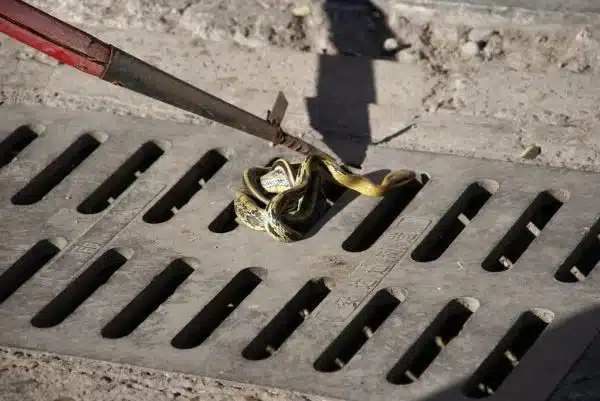
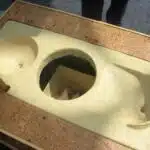



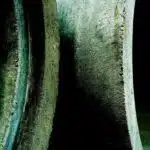


![How To Get Hair Out Of A Bathtub Drain 9 2/365 [Bathtub Drain]](https://green-life.blog/wp-content/uploads/2023/05/cOEu5edpkejq-150x150.jpg.webp)
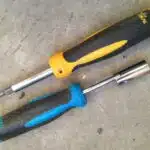


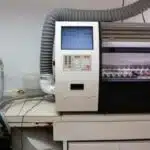
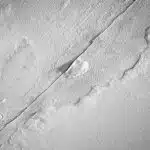
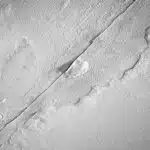

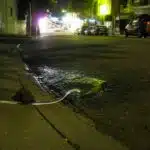
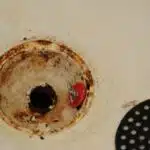
![How To Replace A Bathtub Drain In A Mobile Home 19 2/365 [Bathtub Drain]](https://green-life.blog/wp-content/uploads/2023/05/3ft8KAJsNnjq-150x150.jpg.webp)





